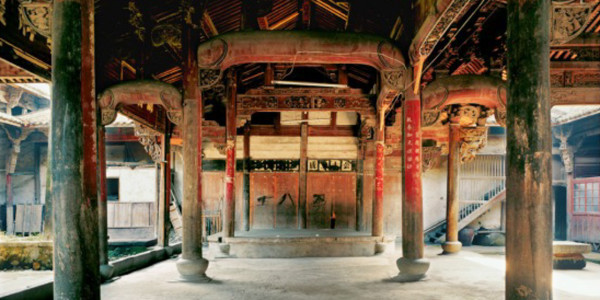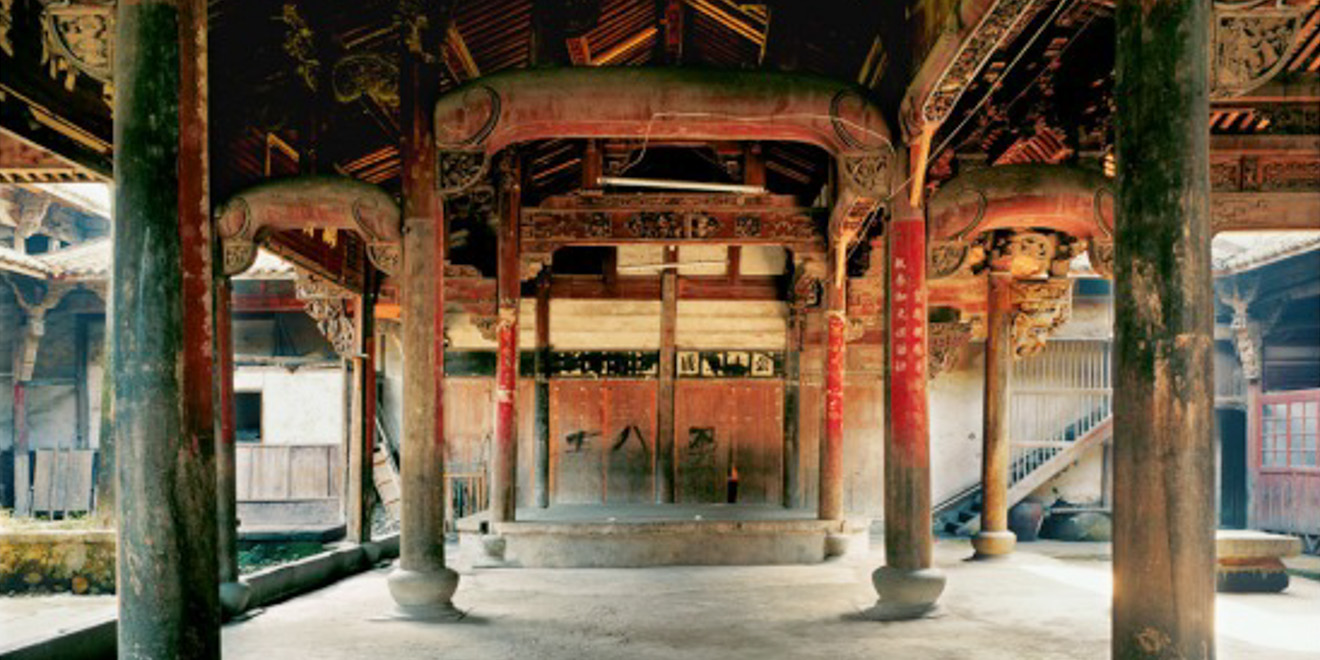
Turn to your right when you enter Cantor and get transported to Asia, the birthplace of calligraphy art, folk art and woodblock prints, among other artistic breakthroughs. The Cantor’s Asian collection contains a diverse array of media – from scrolls to sculptures, from Kris daggers to snuff bottles – all originating from 3000 BCE to the late 20th century. Enter the Madeleine H. Russell Gallery at the innermost of the Asian section and let your eyes feast on art from 20th-century China.
“Shifting Currents” features a small but exquisite selection of contemporary Chinese pieces. These include “Spring Morning at Peach Blossom Spring,” a silk scroll made in the early 20th-century by Ni Tian, a painter who lived through the demise of the Qing dynasty and the birth of the People’s Republic of China. There are also images capturing post-Cultural Revolution China taken by photographers Mu Chen and Shao Yinong, both born around the time of the Cultural Revolution. These artworks tell the stories of contemporary China and give evidence to the introduction of overseas culture into China as scholars from abroad returned home. In addition, they illustrate the transformation of artistic techniques as the camera and other art analog printing methods were brought into China, and give good insight into the evolving artistic tastes of the Chinese.
“Spring Morning at Peach Blossom Spring” was made in 1919 and is one of the earlier pieces featured in this exhibition. Painter Ni Tian interchanged his use of unsaturated warm and cool watercolors to bring out the forms of the mountains and peach blossoms in a subtle but distinguishable way. Using a method characteristic of Chinese landscape paintings, he outlines the objects with natural and thin lines that are interrupted with blotches of black ink. This piece speaks of the timelessness of the mountains and waters – their magnificence and their continued presence beyond the human lifespan – and celebrates the painter’s relationship with a friend.
“Caozhai” and “Tongji” are chromogenic prints from the “Assembly Hall” series by husband and wife photographer duo Mu Chen and Shao Yinong. Spaces previously appropriated by the Red Army for public celebrations or condemnations are depicted using one-point perspective, emphasizing the stark emptiness and coldness of each place. This leaves a lot of room for reflection and memory for both those who lived through those tumultuous times and those enjoying the fruits of labor of their grandfathers today. We remember the glory and passion of revolution and the hysteria and violence that came along the way, all stained with bloodshed and tears.
“Stanford,” a gelatin silver print by Shi Guorui, represents the early 2000s. Shi is known for his large-scale, inverted landscape photographs created using the early photographic technique of camera obscura. This laborious technique can require up to eight hours to develop an image, but the artist speaks of the slow, meditative process as a “spiritual experience.” “Stanford” is slightly haunting, the way a faded photograph shows the objects in gray and ghastly forms. Yet the large black and white-gray spaces make the image also contemplative and quiet, providing respite to tired eyes and giving room for consideration and thought.
“Shifting Currents” is a hidden gem at Cantor and part of the treasure chest of Asian art pieces on display at the Cantor currently. For scholars of Asian art, culture and history, this is a delightful early evening dessert; for the less familiar, this is a small window into the stories of the East.
“Shifting Currents” is on view at the Cantor Arts Center until July 13, 2015.
Contact Bao Jia Tan at baojiatan ‘at’ stanford.edu.
